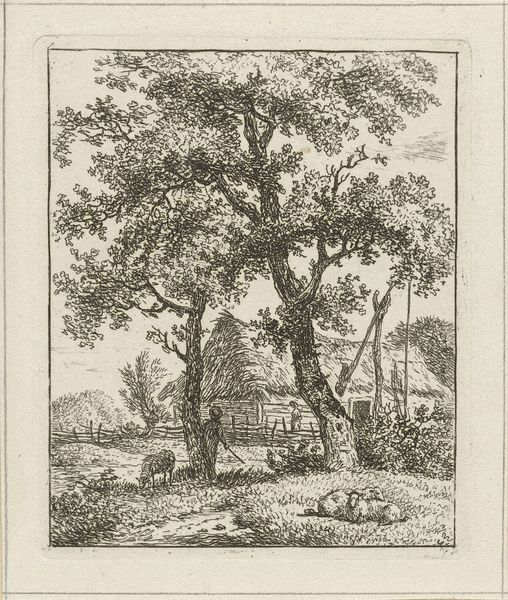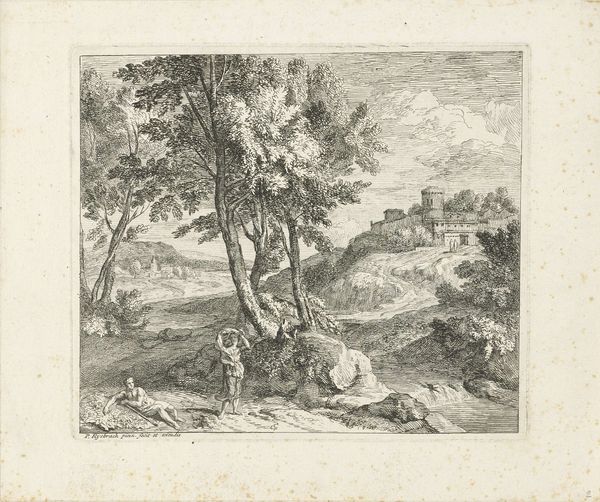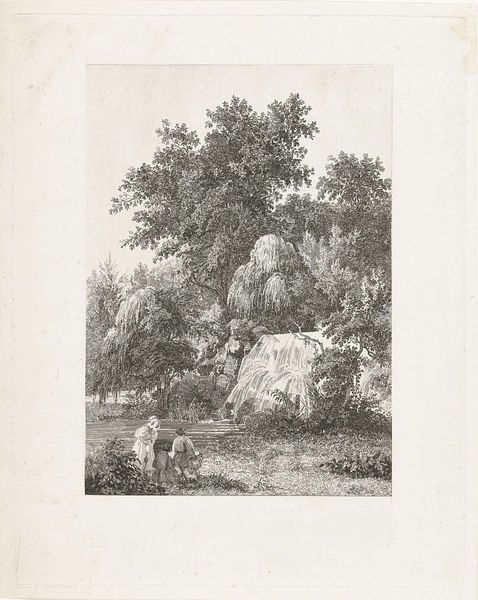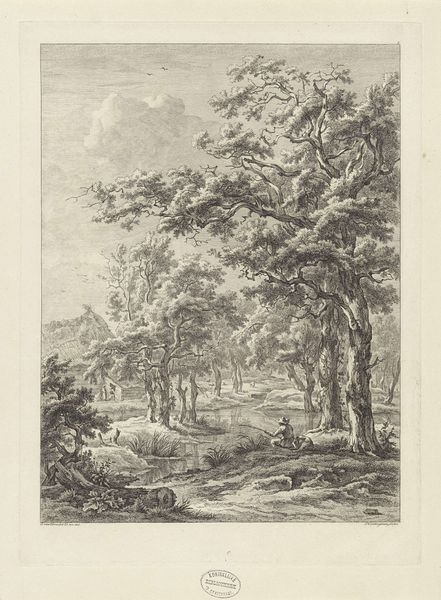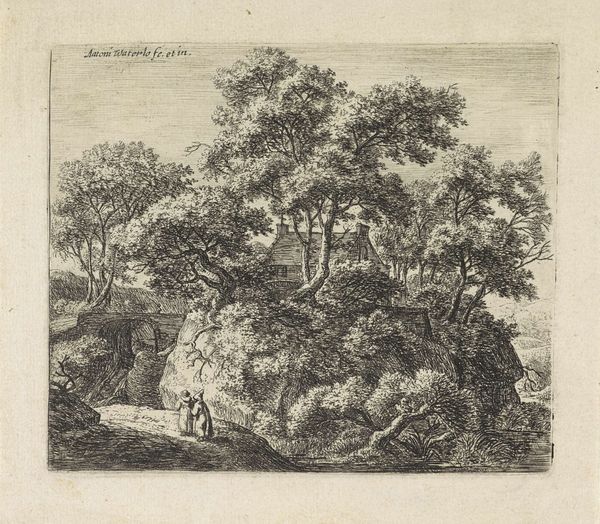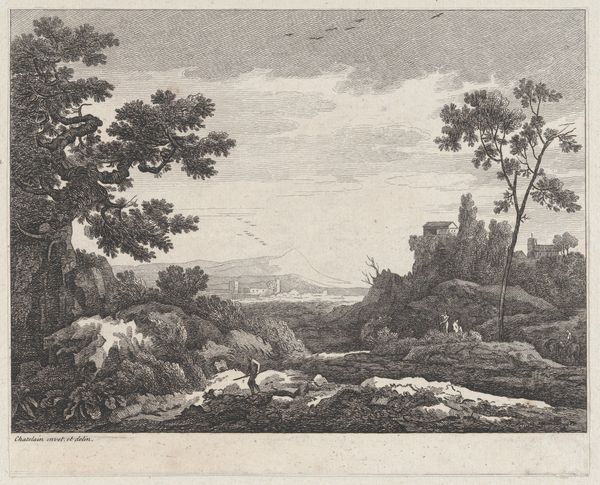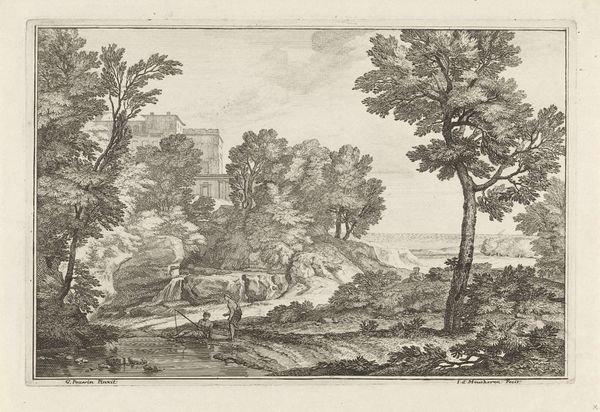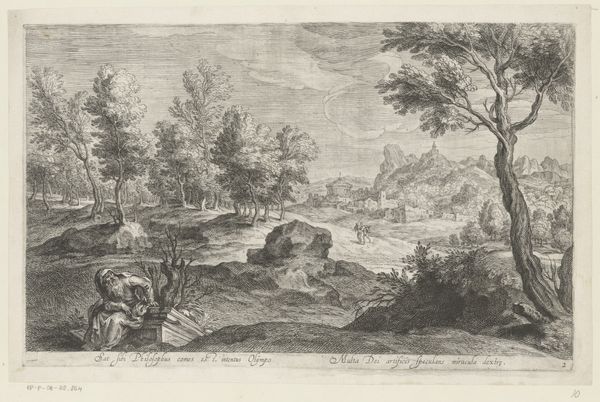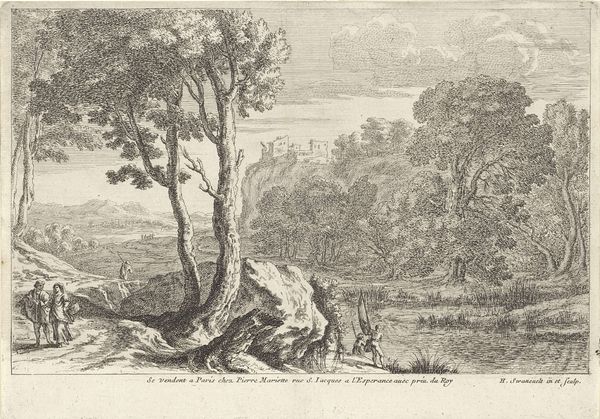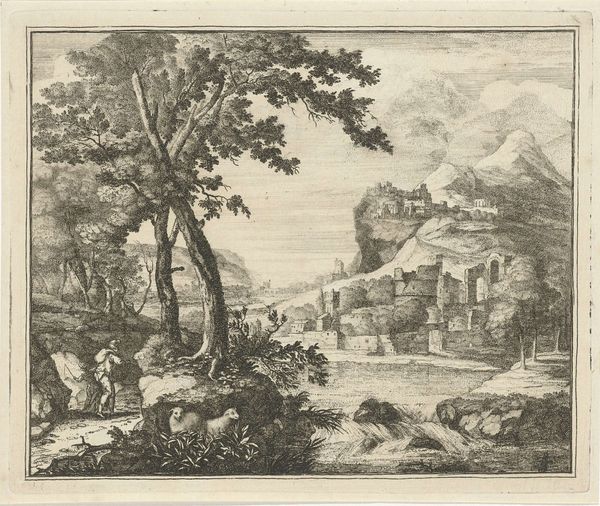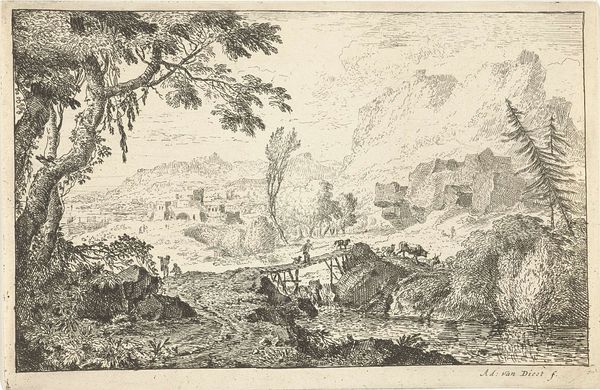
Landschap met rivier en waterrad 1796 - 1856
0:00
0:00
etching
#
etching
#
landscape
#
river
#
etching
#
cityscape
Dimensions: height 275 mm, width 222 mm
Copyright: Rijks Museum: Open Domain
Curator: Today, we’re looking at "Landscape with River and Water Wheel," an etching dating from between 1796 and 1856, by Reinierus Albertus Ludovicus baron van Isendoorn à Blois. Editor: It has a very quiet, almost melancholic atmosphere, doesn't it? The tonal range is restrained, nearly monochromatic. I'm struck by how effectively such a limited palette evokes the feeling of a tranquil afternoon. Curator: Observe how the artist structures space. He uses the winding river to lead the viewer's eye into the depth of the landscape, and then, how the positioning of the mill tower on the right acts as a vertical counterpoint. What do you think? Editor: Indeed, that tower draws the eye up while grounding the structure in its materiality. Consider the labor implied in the very existence of this watermill. Its dependence on both the river's flow and skilled craftsmanship ties human activity to the land. I wonder who labored there. What materials, sourced locally, were integral to this structure? Curator: The scene appears so idyllic and balanced, however. It's carefully composed, wouldn't you agree? The interplay of light and shadow creates a harmony that is key to its appeal. The balance that results from a well-judged division of forms and patterns establishes aesthetic unity. Editor: And yet, the etching process itself tells a tale of production and reproducibility. Consider the implications of printmaking during that period—this artwork could reach a wider audience than a unique painting. That transforms the consumption of imagery, democratizing the ownership of art, wouldn't you agree? Curator: Interesting. The aesthetic merit remains my focal point. The relationship between forms is what is essential for reading its intrinsic meaning, apart from who consumed it. Editor: While formal relations are interesting in themselves, acknowledging how it reflects the social contexts and lived experiences offers even more relevant understanding. Curator: An interesting discussion of social values. A perfect compliment to an insightful visual piece. Editor: Certainly a fascinating perspective that enables viewers to recognize layers of significance and historical implication within a still scene.
Comments
No comments
Be the first to comment and join the conversation on the ultimate creative platform.
